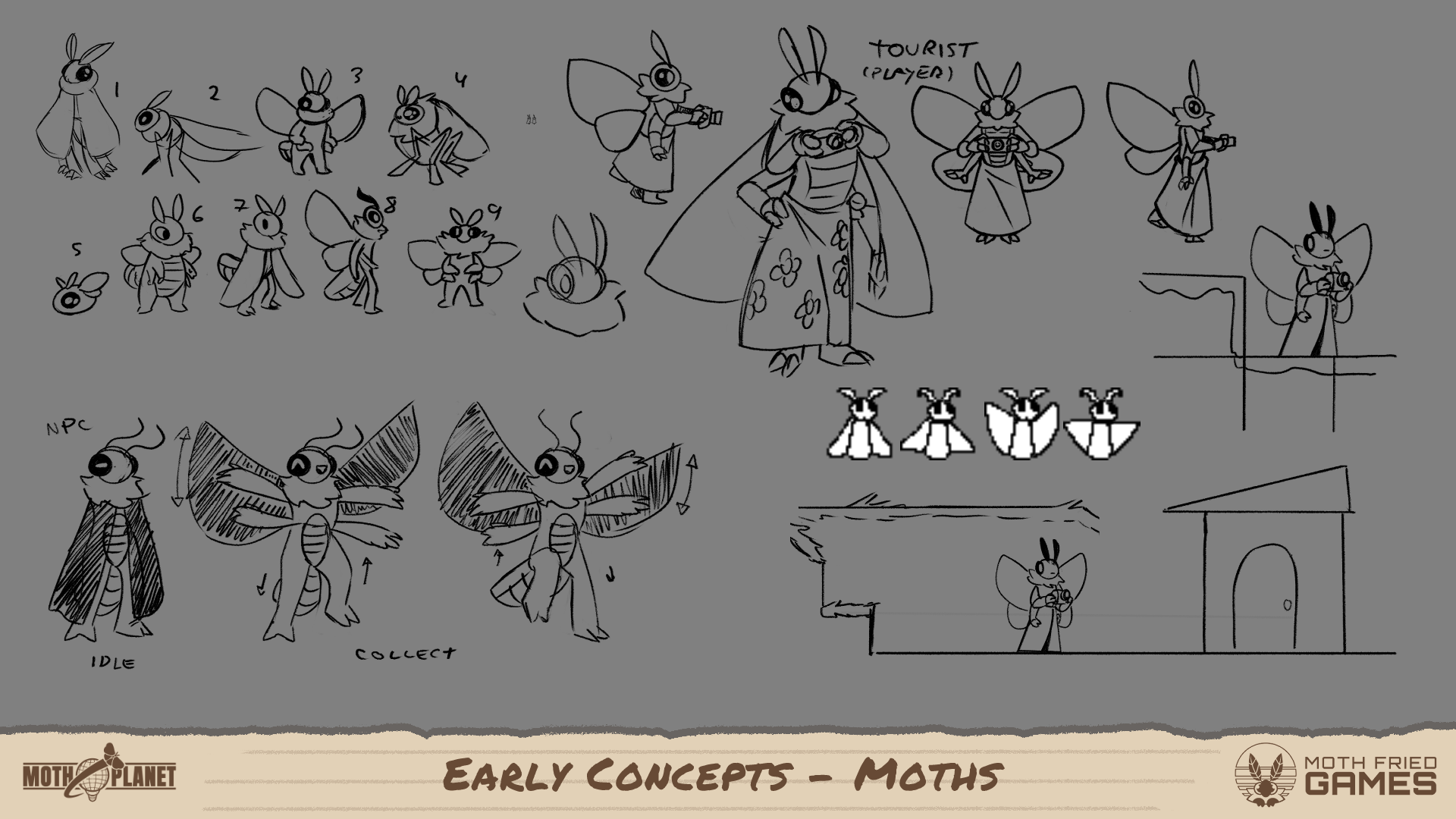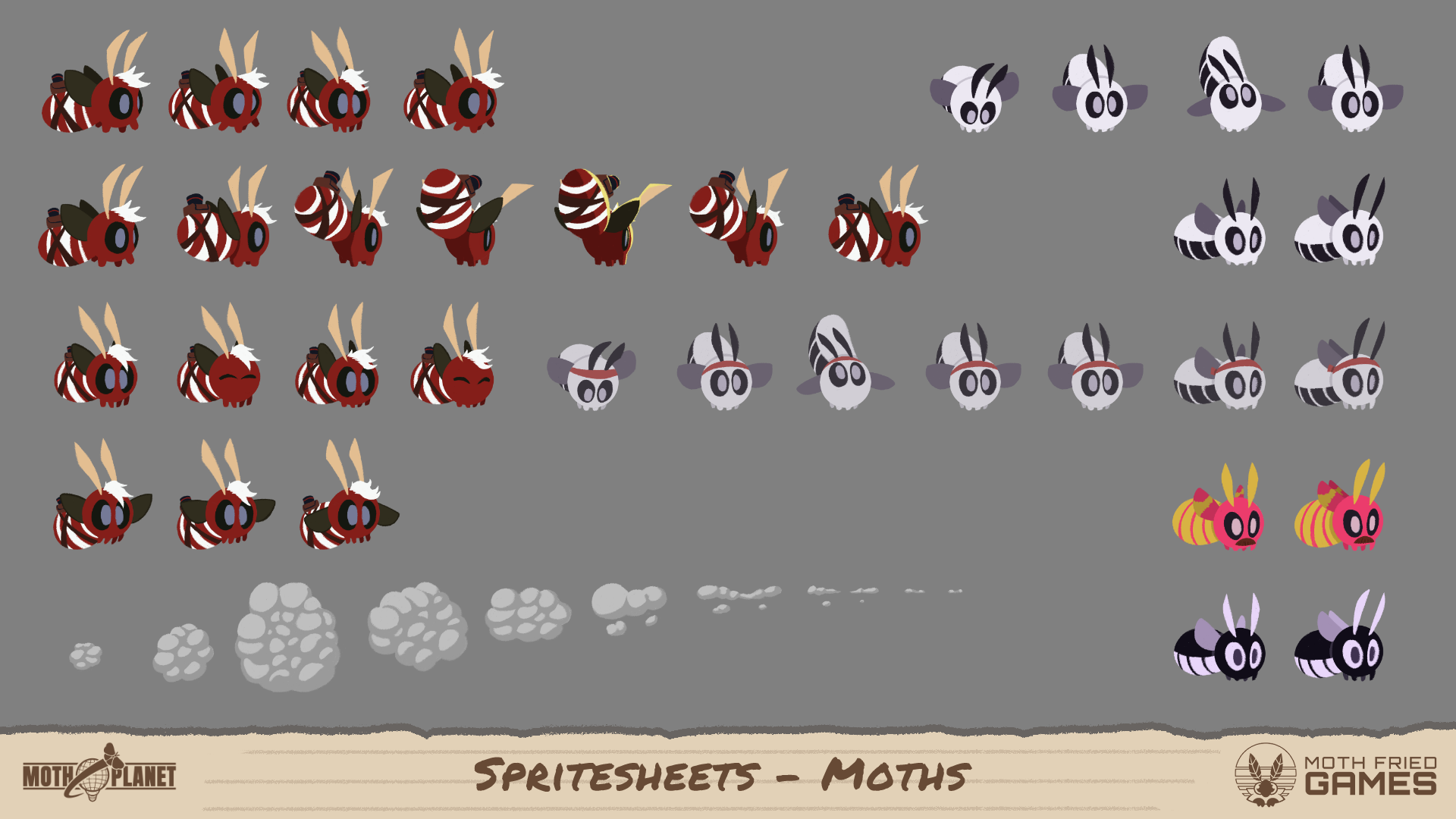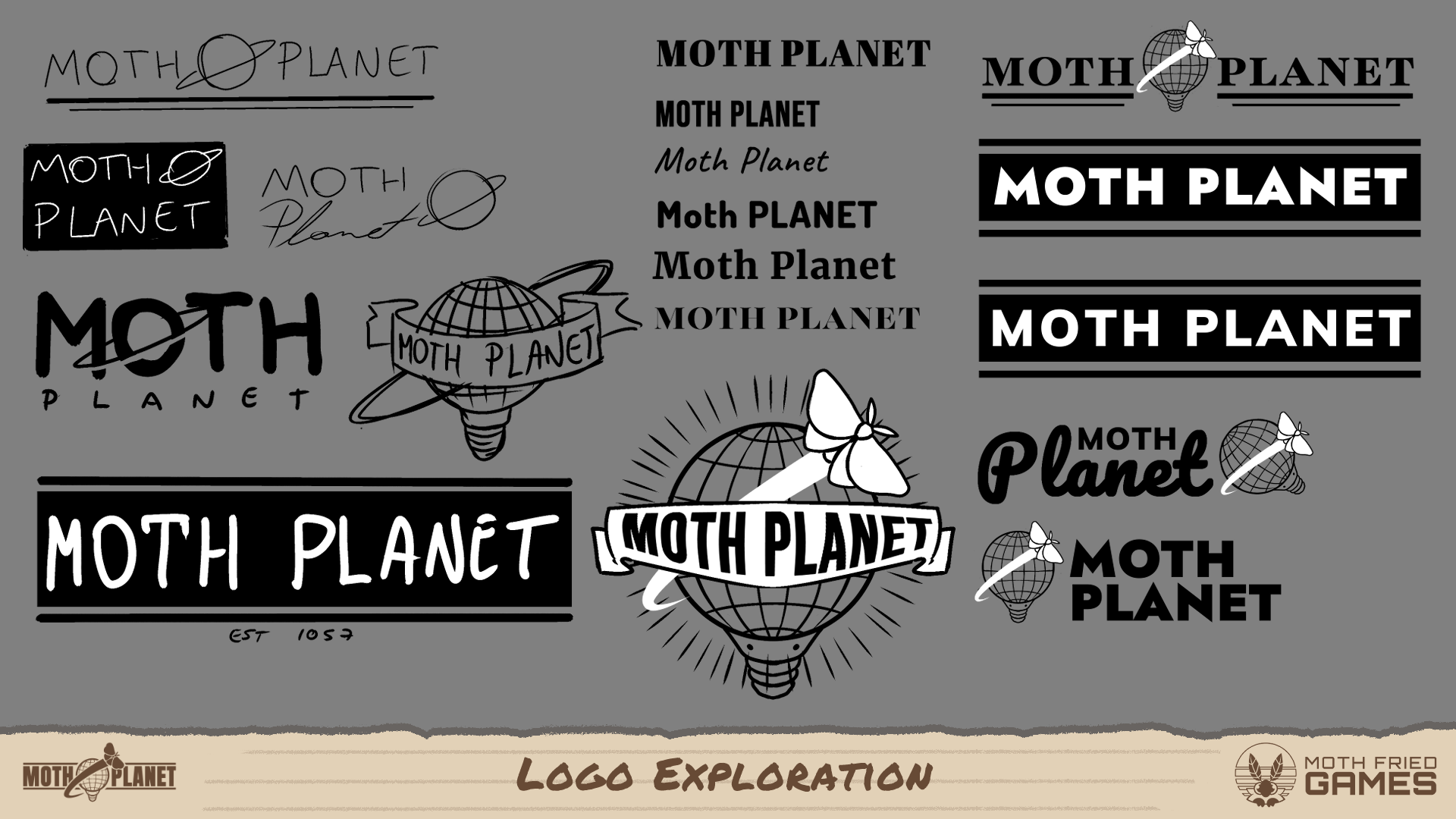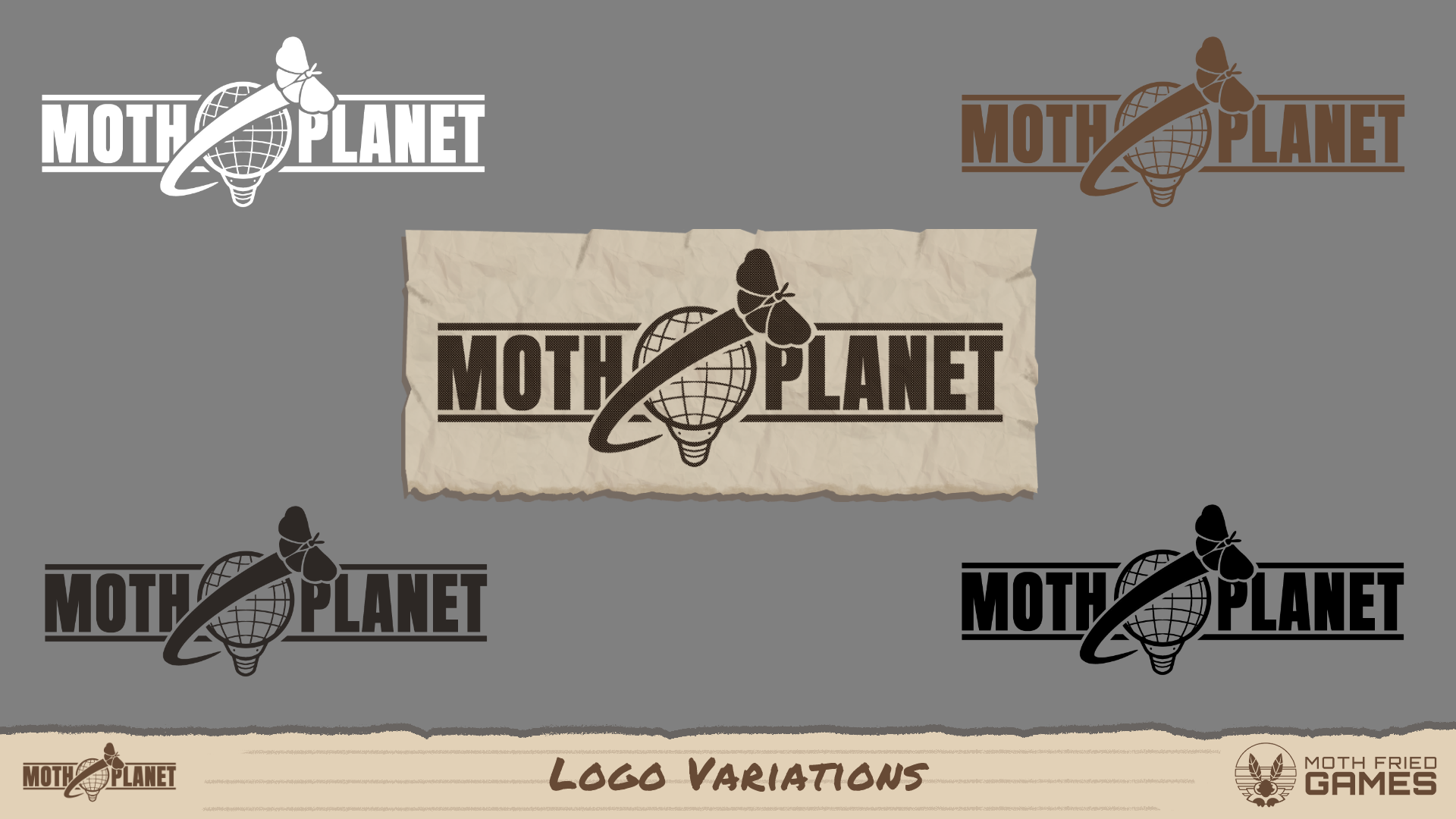Moth Planet Postmortem (Part 1 - Prototyping)
Part 1 - Prototyping
ATLAS: We started out development on Moth Planet back in February 2023. Me and Myr had been talking for a while about wanting to make games together, me being an artist and they a programmer. They were infatuated by the charming "Cat Planet", and after playing it myself, we decided on trying to make a platformer inspired by it just to learn Godot. Eventually we recruited Myr's wife, Selene to help with level design, and my girlfriend, Lobba, to help with game design and production.
SELENE: I was always interested in making games and various other things in the field of computing. I managed to get a copy of game maker at a store once and ended up spending some days in summer painting pixel pines and not much else. :) Later on I'd go into computer science and my main job involves tech support! Myr started streaming, I requested she play Cat Planet and Super Cat Planet and that started things!
MYR: I always wanted to make games, and I've made little experiments here and there in different engines and framework, but never stuck around to finish or develop any of them beyond just a fun programming toy. I can code but I can't produce art or music in a way I'd find satisfying to present or subject an audience to. The kinds of games I wanted to make were not the kind I felt like I could make if I didn't have an artist or two to help.
I actually started my journey as a programmer using flash, precisely because that's what making games looked like to me when I was younger and people shared lots of games on Newgrounds. Games with the spirit of wanting to make something no matter your skill in areas you may be lacking, and games that look so professional one would think they came out on an official console back then, but that's not how life works.
I ended up going into IT, Sys Admin, although I did find myself developing software at times, it wasn't games, it was private tools and solutions for my customers back in Venezuela. When I met Atlas, I never thought we'd actually start making a game together, personally, because I'm friends with many artists and I know the struggle of trying to produce art professionally, to pay bills and sustain your entire living with art alone is not easy for most. Building a regular audience willing to use their own hard earned money to support your creative inclinations is truly a hard task.
Even if what you produce is considered to be good or above average or outstanding by audiences outside the comfort of friends and family who may not be wholly honest about what you create, there's no guarantee this will be good enough to support yourself. Networking, some witty marketing and outright just simple luck are as much parts of your trade as is producing something people want from you against something you enjoy producing.
Basically, I never expected I'd find someone willing to risk their precious time to work on something that was more passion project or portfolio fodder than actually anything we truly considered to be a serious project we intended to complete and release commercially with basically no money in any of our pockets to pay each other or anyone else to help us build this thing.
And then we carried on trying to make something for fun while struggling to figure out if what we wanted to make was serious or not. And before we knew it, we were serious about making something more than just a fun little toy, for better or for worse.
ATLAS: The plan was to make a prototype and see where we would go from there. We had virtually no experience with game production besides our own fields of work, but we knew of some common pitfalls indie devs tend to fall into, from passively learning from other developers on the internet who shared their experiences.
That didn't stop us from accidentally scope-creeping.
MYR: When it came to choosing the tools for this game, we had already seen the situation with Unity’s runtime fee, and I didn’t want to suggest something familiar but obsolete like Flash (although later on I discovered there are some cool open frameworks to work with Flash today and right now in a production ready state).
I had no particular strong skills with any other tools I’ve used like LibGDX, so I decided to pitch working with Godot, having heard much of it in the past few days due to Unity’s industry shaking bad choices. We began with Godot 3.5, knowing that Godot 4 was around the corner. We had a cute little prototype full of programmer art and basic platforming, a character, a camera, rooms and a basic tileset.
The original sprites I made even tried to imitate Cat Planet’s black and white look. We truly were just hoping to make something inspired by Cat Planet, something worth playing for about 30 minutes and no more. Something cute to learn how to work together in Godot and learn the workflow.
One year later we have something completely different after many months of constant scope-creep and changing our minds on what it meant to finish Moth Planet.

ATLAS: Both of us had moth fursonas, (we basically just met because of that) so we were adamant that the game would be about moths, of course, therefore Moth Planet. We'd borrow the bouncy physics from Cat Planet because moths are notoriously wonky fliers, and make the player character have to interact and talk to them, where they'd say witty things and dance, just like Cat Planet as well.

However, as much as our game borrowed from its inspiration, we wanted to add to our own flavor, which shaped up the game's story. Our player would be a tourist moth visiting other moths, and by taking pictures of them, they'd become euphoric and shake their butt while saying silly things! And then Myr came up with the light physics, which allowed us to use the light as a gameplay mechanic in more ways than just flashbombing moths.

I had little experience with tilesets and sprite animation, so it was all a learning experience. The first villager moth and player sprites were made in a rush, for prototyping,. I used a textured brush that left a bunch of holes in the painting, which came back to bite me in the abdomen later. As for the tilesets, we defined a tile size early on, not too big and not too small, and then i got to work. Looking back, making a larger tilemap with more layers would've made the game look nicer, but because we didn't plan for it to become too big, we settled on one with 2 tiles depth, and 128 pixels wide tiles.

We worked with this idea for a while, but the game still felt directionless. We had a vague story in mind, about the player stumbling into the mysterious secrets of the land, and we had penned out a possible game progression, up to four biomes or zones, just so it wouldn't be too big of a game (the hubris...), and I had made crude tilesets for what was going to be the forest biome.


But it was only when trying to make a logo for the game that inspiration hit and changed how we'd write and plan our little game: Moth Planet would be a newspaper, and the player a journalist interviewing locals about strange events. That's when the game really started taking form, and both writing and level design began to feel like we had an objective in mind.

By this point we had a working prototype, the game worked, and we had a few dev rooms to test the basic mechanics. With that, we started work on the Pre-Alpha release. I was still making more tilesets and spritework, and wasn't very involved at map making at first but then something changed.
BIG Festival happened.
(TO BE CONTINUED)
Get Moth Planet
Moth Planet
Interview moths in this bouncy platformer!
| Status | Released |
| Authors | Moth Fried Games, Myr the Moth, Atlas, Selene Ellinoth, LobbaMattos |
| Genre | Platformer, Adventure |
| Tags | Exploration, Metroidvania, Singleplayer |
| Languages | English, Spanish; Latin America, French, Portuguese (Brazil) |
More posts
- v2.0.179 days ago
- v2.0.085 days ago
- v1.1.6Nov 07, 2024
- v1.1.4Sep 30, 2024
- v1.1.3Sep 14, 2024
- v1.1.2Aug 20, 2024
- v1.1.1Aug 19, 2024
- v1.1.0Aug 17, 2024
- Moth Planet Postmortem (Part 5 - Demo and Release)Aug 16, 2024
- Moth Planet Postmortem (Part 4 - Beta)Aug 14, 2024

Leave a comment
Log in with itch.io to leave a comment.